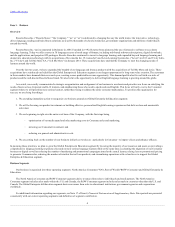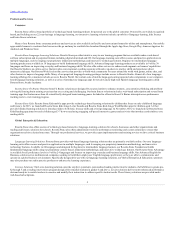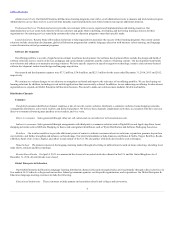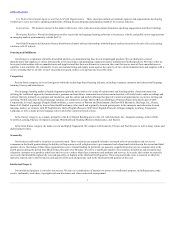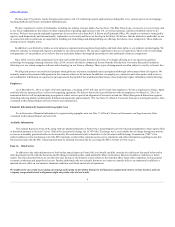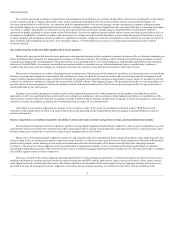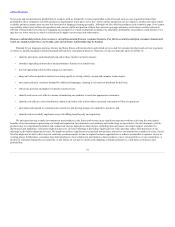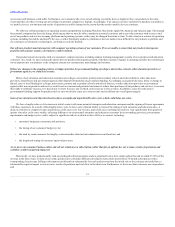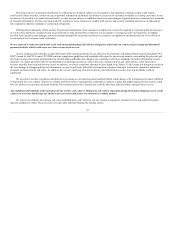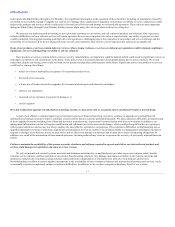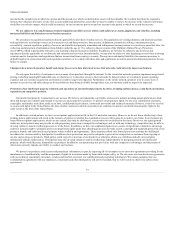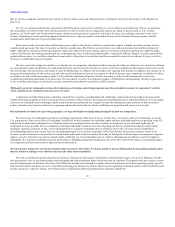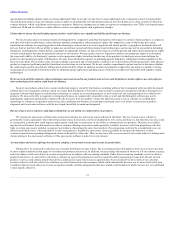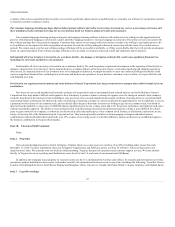Rosetta Stone 2014 Annual Report Download - page 15
Download and view the complete annual report
Please find page 15 of the 2014 Rosetta Stone annual report below. You can navigate through the pages in the report by either clicking on the pages listed below, or by using the keyword search tool below to find specific information within the annual report.
Table of Contents
• potential unpredictable changes in foreign government regulations;
• legal and cultural differences in the conduct of business;
• import and export license requirements, tariffs, taxes and other trade barriers;
• fluctuations in currency exchange rates;
• potentially adverse tax consequences;
• difficulties in enforcing contracts and collecting accounts receivable, and longer payment cycles, especially in emerging markets;
• the need to accept different and higher cost consumer payment methods;
• the costs and difficulties of complying with a wide variety of U.S. and foreign laws, regulations, trade standards, treaties and technical standards,
including the Foreign Corrupt Practices Act;
• difficulty in protecting our intellectual property and the high incidence of software piracy in some regions;
• costs and delays in hiring or downsizing foreign work forces as a result of differing employment and other laws;
• protectionist laws and business practices that favor local competitors; and
• costs and difficulties of complying with differing laws on the collection, use and storage of personal data and the liabilities for unauthorized
disclosure or theft of this data under the laws of different countries..
The effects of any of the risks described above could reduce our future revenue from our international operations and could harm our overall business,
revenue and financial results.
If we are unable to continually adapt our products and services to mobile devices and technologies other than personal computers and laptops, and to
adapt to other technological changes and customer needs generally, we may be unable to attract and retain customers, and our revenue and business could
suffer.
We need to anticipate, develop and introduce new products, services and applications on a timely and cost-effective basis that keeps pace with
technological developments and changing customer needs. The process of developing new high technology products, services and applications and
enhancing existing products, services and applications is complex, costly and uncertain, and any failure by us to anticipate customers' changing needs and
emerging technological trends accurately could significantly harm our ability to attract and retain customers and our results of operations. For example, the
number of individuals who access the internet through devices other than a personal computer, such as tablet computers, mobile devices, televisions and set-
top box devices, has increased dramatically and this trend is likely to continue. Our products and services may not work or be viewable on these devices
because each manufacturer or distributor may establish unique technical standards for such devices. Accordingly, we may need to devote significant
resources to the creation, support and maintenance of such versions. If we fail to develop or sell products and services on a cost-effective basis that respond to
these or other technological developments and changing customer needs, we may be harmed in our ability to attract and retain customers, and
14


